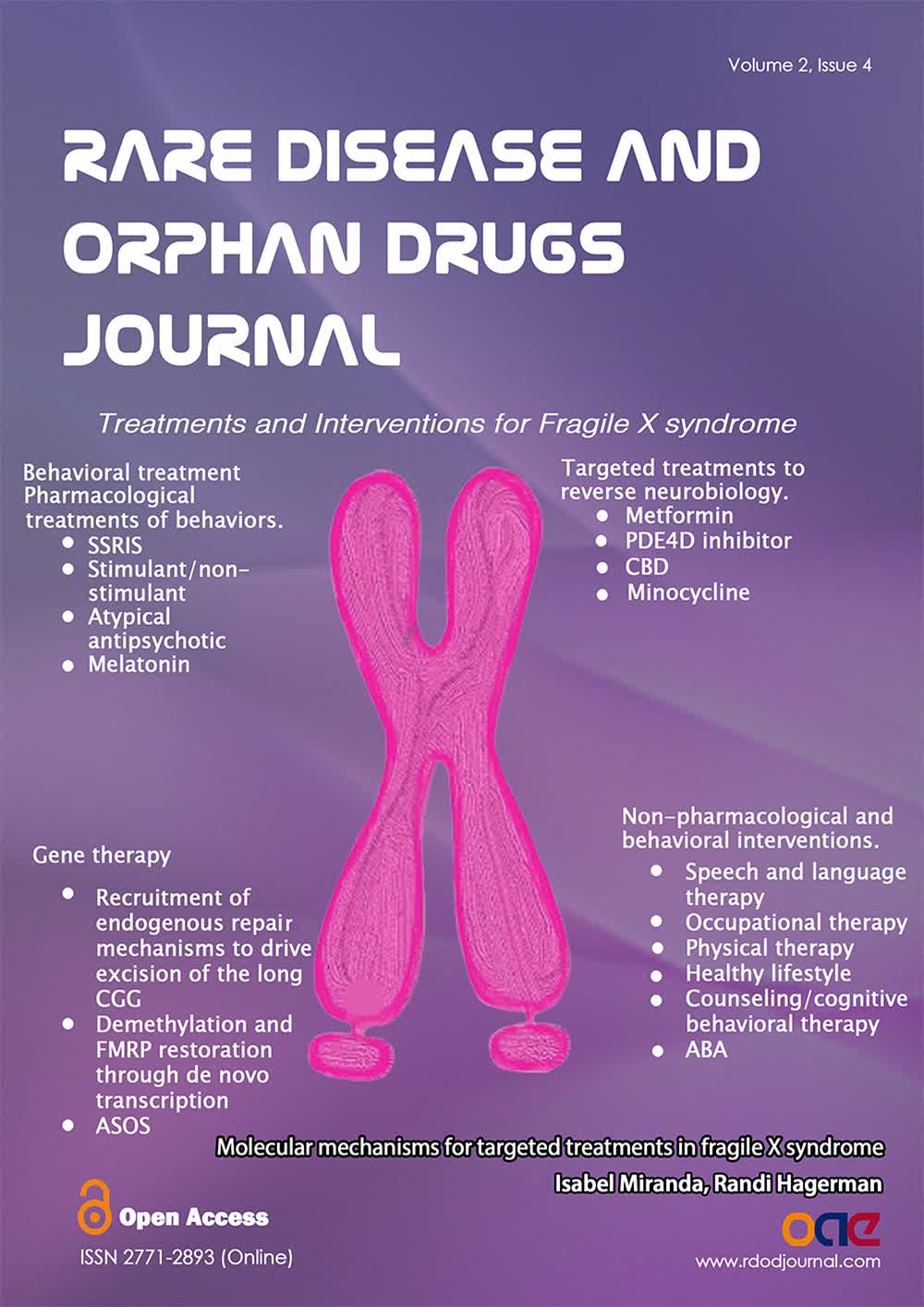Volume 2, Issue 4 (December, 2023) – 10 articles
Cover Picture: Fragile X syndrome (FXS) is caused by a full mutation (> 200 repeats) in the 5’untranslated region of the Fragile X Messenger Ribonucleoprotein 1 gene (FMR1 gene), which leads to methylation and silencing of expression, generating the total or partial absence of its product, FMR1 protein (FMRP). When the repetitions are between 55 and 200 cytosine-guanine-guanine (CGG) repeats, it is called a premutation, which is related to a wide spectrum of conditions such as Fragile X-associated tremor ataxia syndrome (FXTAS), fragile X-associated primary ovarian insufficiency (FXPOI), and fragile X-associated neuropsychiatric disorders (FXAND). High levels of FMR1 mRNA are implicated in premutation pathophysiology, which differs from the deficiency or absence of FMRP in FXS. In recent years, numerous attempts have been made to find treatments that can counteract the effects of the absence of FMRP and improve symptoms associated with the condition such as intellectual disability, anxiety, autism, stereotypies, language delay, and aggressive behavior. Here, we review current treatments in addition to targeted treatments that can reverse some of the neurobiological abnormalities in those with FXS. We also review molecular interventions that will hopefully lead to a promising future for those affected by FXS and their families.
view this paper 








